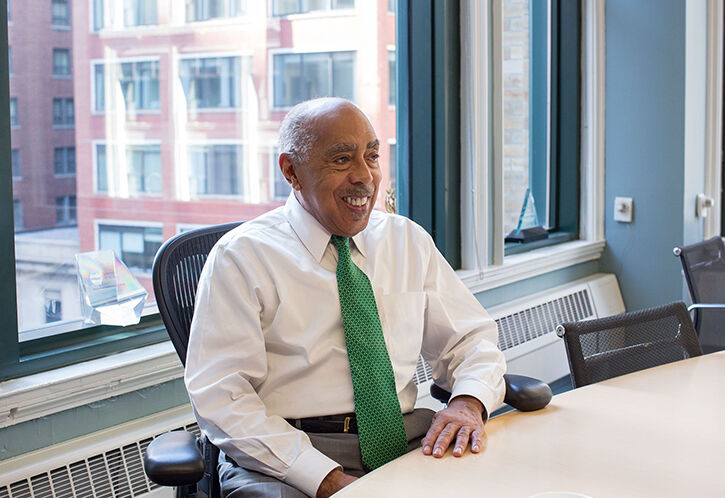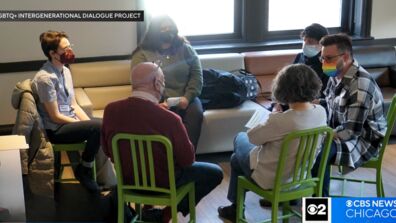
The Art and Science of Leading

When SAIC selected a scientist as its president in 2010, it was an unconventional choice. Granted, Walter E. Massey brought with him a distinguished career as a physicist, educator, administrator, corporate leader, philanthropist, and all-around well-respected and well-connected individual. He had held significant positions at Brown University, University of Chicago, Argonne National Laboratory, National Science Foundation, University of California, and Morehouse College, but serving as the president of a prestigious art and design college would be a whole new challenge.
Five years later, no one second-guesses that decision. Under Massey’s leadership, SAIC has maintained its top-ranked status while evolving and growing in countless ways. This includes an increase in student scholarships and a more diverse campus through initiatives like the Walter and Shirley Massey Chicago Fund and the College Arts Access Program; the School’s first-ever student center, the LeRoy Neiman Center; a broadened outreach to new institutional partners across the arts, higher education, and business communities; more interdisciplinary opportunities to explore the intersections of art, science, design, and technology; and a stronger financial position—marked by a 30 percent increase in SAIC’s endowment.
While completing the final year of his presidency, Massey reflected on his experience at SAIC and how he has worked to position the School for the next phase of its storied history.
When you became president, one of your goals was to be a resource for faculty and students and a mentor for other senior leaders. How has your role evolved throughout the past five years?
My role has changed considerably. I came in on an interim basis. I was asked to stay on after the first semester, and the next year, I was asked to stay on again. I’ve become engaged in programs and activities, come to know the faculty, and helped guide and influence the direction of the School, which was quite different from my initial role as I saw it.
What was an unexpected moment that made you think, “This is a great job?”
My first week here, Doug Pancoast (Associate Professor of Architecture, Interior Architecture, and Designed Objects) came with one of his graduate students to tell me about a project they were doing with Argonne National Laboratory. I was surprised! I never expected to come to SAIC and find out we were working with my former science research lab. That led me to see there were a number of things we were doing here, especially in the design areas, that were quite compatible to what I was used to.
How have you helped further explorations across art and science at SAIC?
It was interesting to me how many people were already working at the nexus of art and science. But we didn’t have a coherent, organized activity around it. One thing I was able to do was to spur the interest in coalescing the ideas that were already floating around. The issues of art and science have become more prominent in art and design schools and major universities. I feel we are at the leading edge of that wave.
One of your priorities was to increase diversity. Why is this important?
It is clear to me the art world benefits from people who have different visions of the world, who have different cultures and heritages. I don’t think we had to sell our faculty and staff on that notion. We haven’t had in place the internal structures, processes, and resources to do the things we want to do.
We made a very good start with the Diversity Advisory Group (DAG). [DAG is composed of students, faculty, and staff and consists of four subcommittees: Curriculum, Communications, Connectivity, and Climate.] In many institutions, diversity initiatives are separate from the core mission of the institution. We have a Dean of Faculty [Lisa Wainwright] who volunteered to be the chair of the Office for Diversity and Inclusion—I think that is significant.
As you prepare to transition to chancellor, how do you see the state of SAIC?
Enrollment has gone where we wanted, and applications are the highest in the history of the School. We are going to have a very strong leader in Elissa Tenny, behind whom the faculty has already united. People are beginning to see that individuals who have an art and design education can make contributions far beyond those areas they traditionally might have been engaged. I think SAIC is in a very good place.
What is something you wanted to accomplish while you were here that didn’t pan out?
I never took a course in printmaking!
What part of your SAIC routine will you miss the most?
I will miss just coming in and seeing students every day. I really like being around students. I also like being around faculty. I love walking around campus, getting on the elevator, and speaking to students—it always livens up my day.
